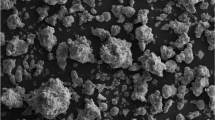Abstract
The main purpose of this paper is to study the change of chip morphology with increasing cutting speed by considering the role of microstructure evolution in chip root. The orthogonal cutting experiments of AISI 1045 steel showed that the chip morphology would be changed from continuous chip to discontinuous serrated chip as the microstructure softening events occurred in the secondary shear zone with the increasing cutting speed. Based on the principle of cutting force balance and the concept of equilibrium shear angle (ϕ e), the influence of the dynamic behavior of deformation and recrystallization in chip material on chip morphology was analyzed and modeled. Three types of chip morphology would be characterized corresponding to the sliding, only severe deformation and dynamic recrystallization behaviors, respectively, in the secondary shear zone. It was concluded that the physical mechanism of the serrated chip morphology is the variation of ϕ e controlled by the mechanical properties of workpiece material in the secondary shear zone, which is related to dynamic deformation behavior of material as influenced by microstructural softening events, such as recrystallization or phase transformation.
Similar content being viewed by others
References
Nomani J, Pramanik A, Hilditch T, Littlefair G (2015) Chip formation mechanism and machinability of wrought duplex stainless steel alloys. The International Journal of Advanced Manufacturing Technology 1–9
Ye GG, Chen Y, Xue SF, Dai LH (2014) Critical cutting speed for onset of serrated chip flow in high speed machining. Int J Mach Tools Manuf 86:18–33
Nouari M, Molinari A (2005) Experimental verification of a diffusion tool wear model using a 42CrMo4 steel with an uncoated cemented tungsten carbide at various cutting speeds. Wear 259(7):1151–1159
Oxley PLB (1989) The mechanics of machining: an analytical approach to assessing machinability. Ellis Horwood Ltd., England
Karpat Y, Özel T (2006) Predictive analytical and thermal modeling of orthogonal cutting process—part II: effect of tool flank wear on tool forces, stresses, and temperature distributions. J Manuf Sci Eng 128(2):445–453
Quiza R, Figueira L, Davim JP (2008) Comparing statistical models and artificial neural networks on predicting the tool wear in hard machining D2 AISI steel. Int J Adv Manuf Technol 37(7–8):641–648
Kagnaya T, Boher C, Lambert L, Lazard M, Cutard T (2014) Microstructural analysis of wear micromechanisms of WC–6Co cutting tools during high speed dry machining. Int J Refract Met Hard Mater 42:151–162
Rowe GW, Spick PT (1967) A new approach to determination of the shear-plane angle in machining. J Manuf Sci Eng 89(3):530–538
Oxley PLB, Hastings WF (1977) Predicting the strain rate in the zone of intense shear in which the chip is formed in machining from the dynamic flow stress properties of the work material and the cutting conditions. Proc R Soc Lond A Math Phys Sci 356(1686):395–410
Subramanian SV, Gekonde HO, Zhu G, Zhang X (2002) Role of microstructural softening events in metal cutting. Mach Sci Technol 6(3):353–364
Subramanian SV, Gekonde HO, Zhu G, Zhang X, Urlau U, Roelofs H (2004) Inclusion engineering of steel to prevent chemical tool wear. Ironmak Steelmak 31(3):249–257
Adibi-Sedeh AH, Madhavan V, Bahr B (2003) Extension of Oxley’s analysis of machining to use different material models. J Manuf Sci Eng 125(4):656–666
Calamaz M, Coupard D, Nouari M, Girot F (2011) Numerical analysis of chip formation and shear localisation processes in machining the Ti-6Al-4V titanium alloy. Int J Adv Manuf Technol 52(9–12):887–895
Jaspers SPFC, Dautzenberg JH (2002) Material behaviour in conditions similar to metal cutting: flow stress in the primary shear zone. Int J Mater Prod Technol 122(2):322–330
Gekonde HO, Subramanian SV (2002) Tribology of tool–chip interface and tool wear mechanisms. Surf Coat Technol 149(2):151–160
Jonas JJ, Quelennec X, Jiang L, Martin É (2009) The avrami kinetics of dynamic recrystallization. Acta Mater 57(9):2748–2756
Pu CL, Zhu GH, Tao, YL, Yang SB (2015) Modeling of hot deformation behavior with dynamic recrystallization in TC4 titanium alloy. Int J Mater Res, pp 1–7
Ma Q, Lin ZQ, Yu ZQ (2009) Prediction of deformation behavior and microstructure evolution in heavy forging by FEM. Int J Adv Manuf Technol 40(3–4):253–260
Courbon C, Mabrouki T, Rech J, Mazuyer D, Perrard F, D’Eramo E (2013) Towards a physical FE modelling of a Dry cutting operation: influence of dynamic recrystallization when machining AISI 1045. Procedia CIRP 8:516–521
Author information
Authors and Affiliations
Corresponding author
Rights and permissions
About this article
Cite this article
Pu, C.L., Zhu, G., Yang, S. et al. Effect of microstructure softening events on the chip morphology of AISI 1045 steel during high speed machining. Int J Adv Manuf Technol 82, 2149–2155 (2016). https://doi.org/10.1007/s00170-015-7472-9
Received:
Accepted:
Published:
Issue Date:
DOI: https://doi.org/10.1007/s00170-015-7472-9



